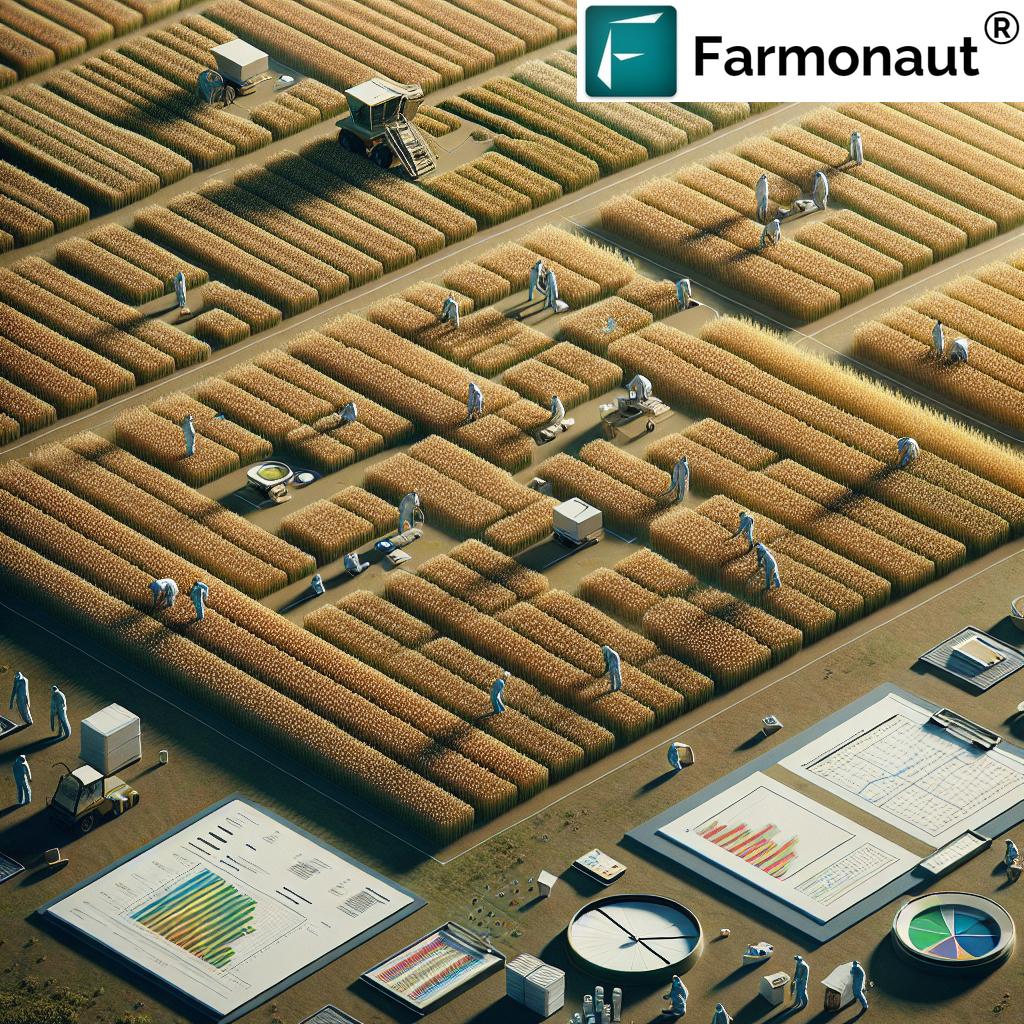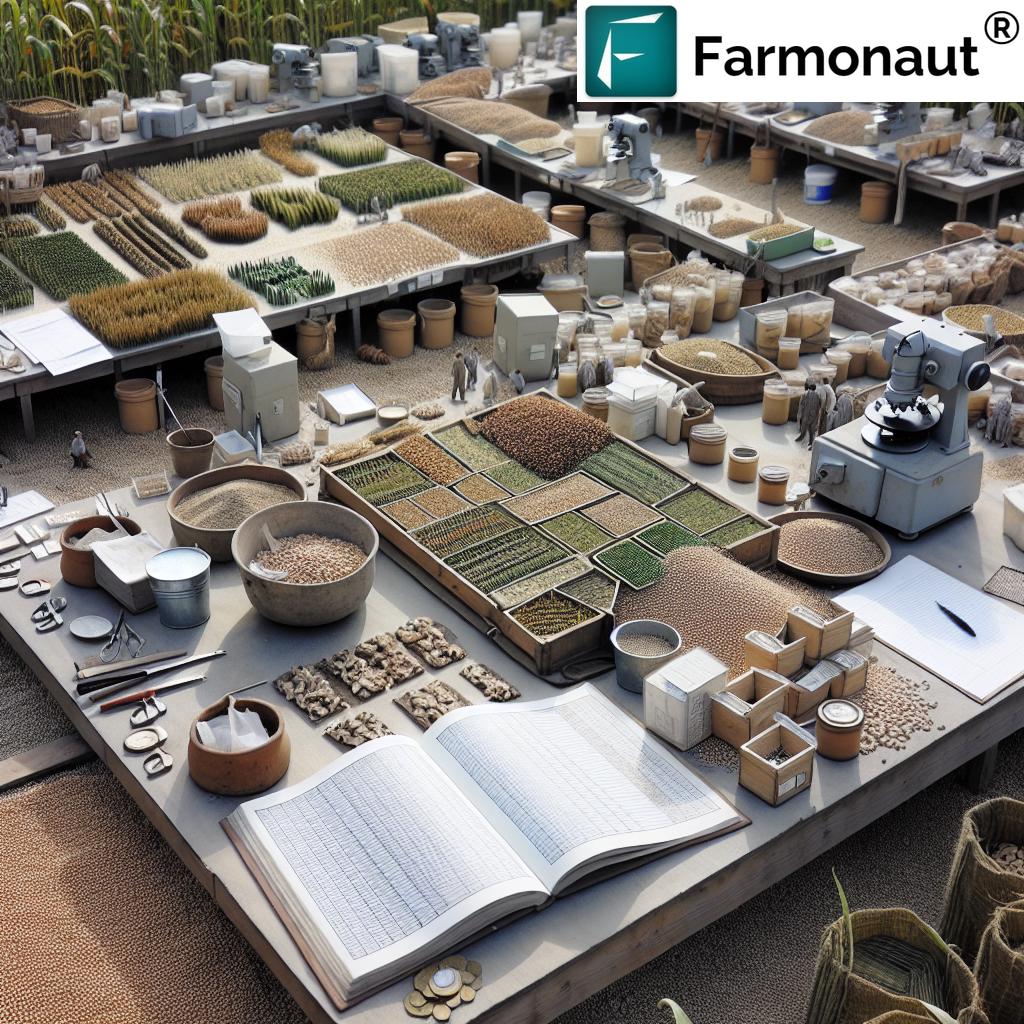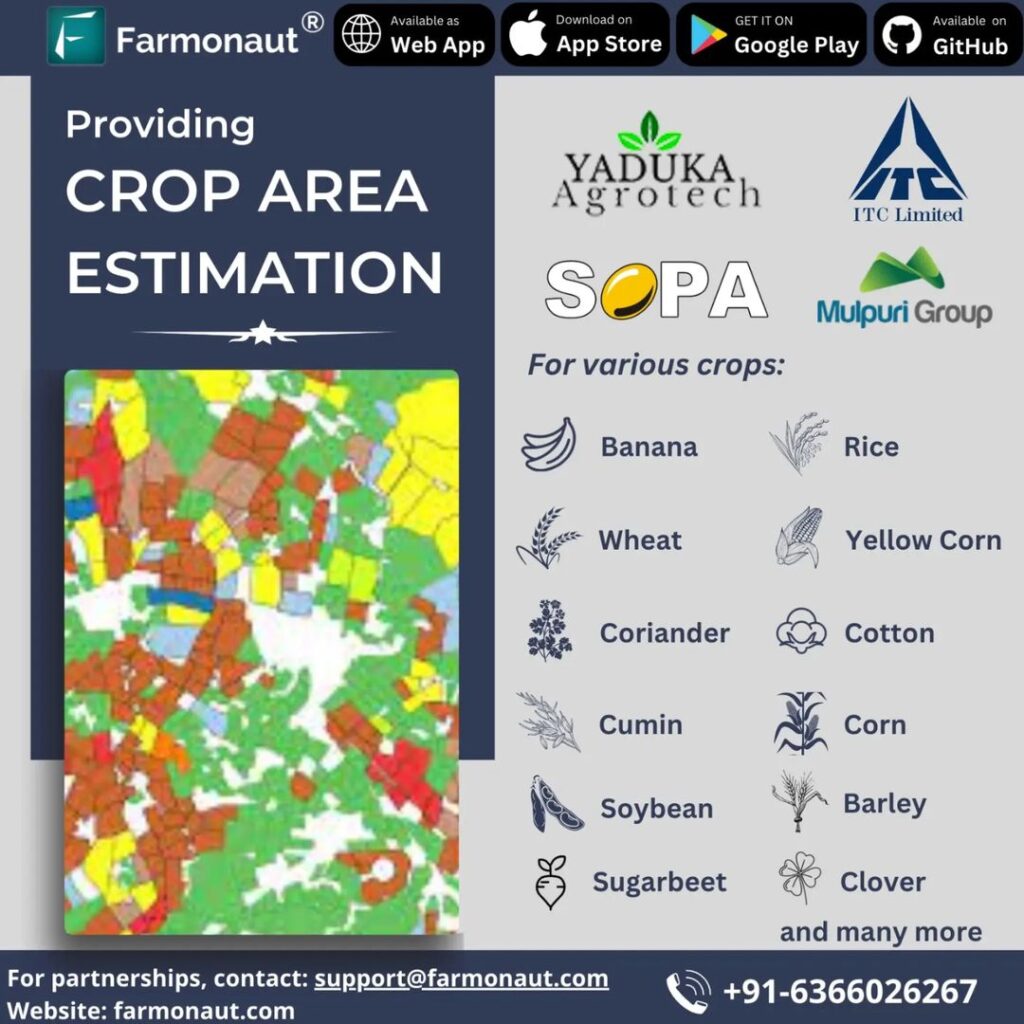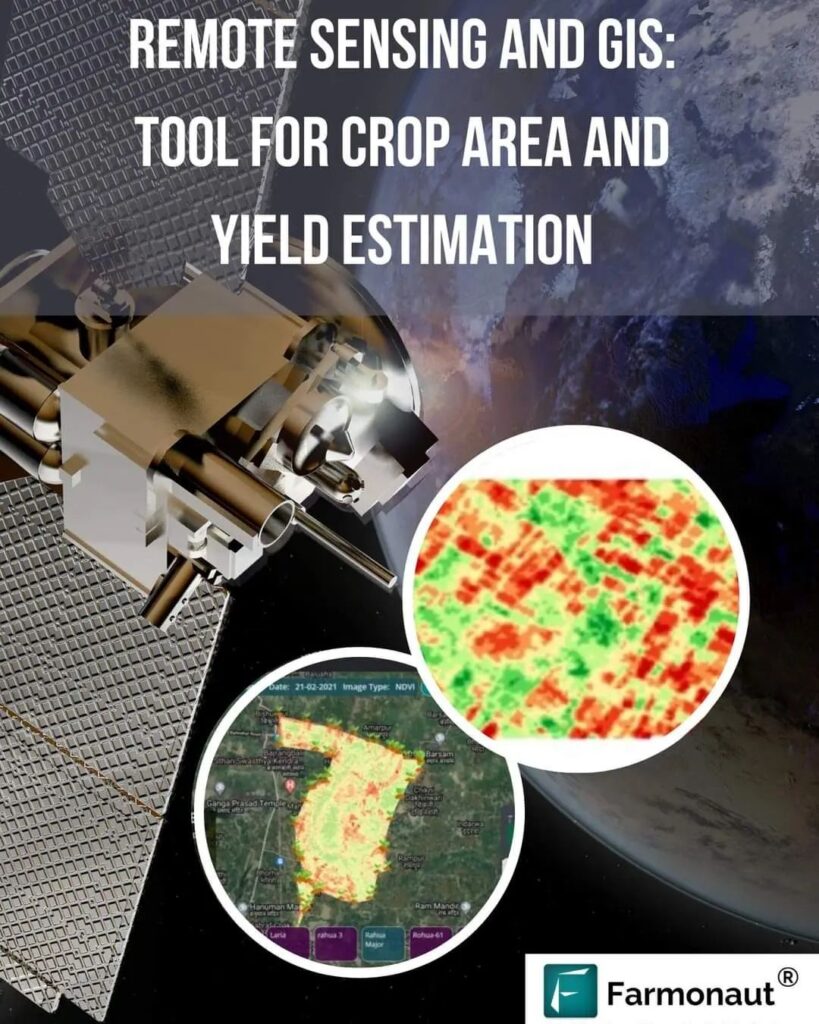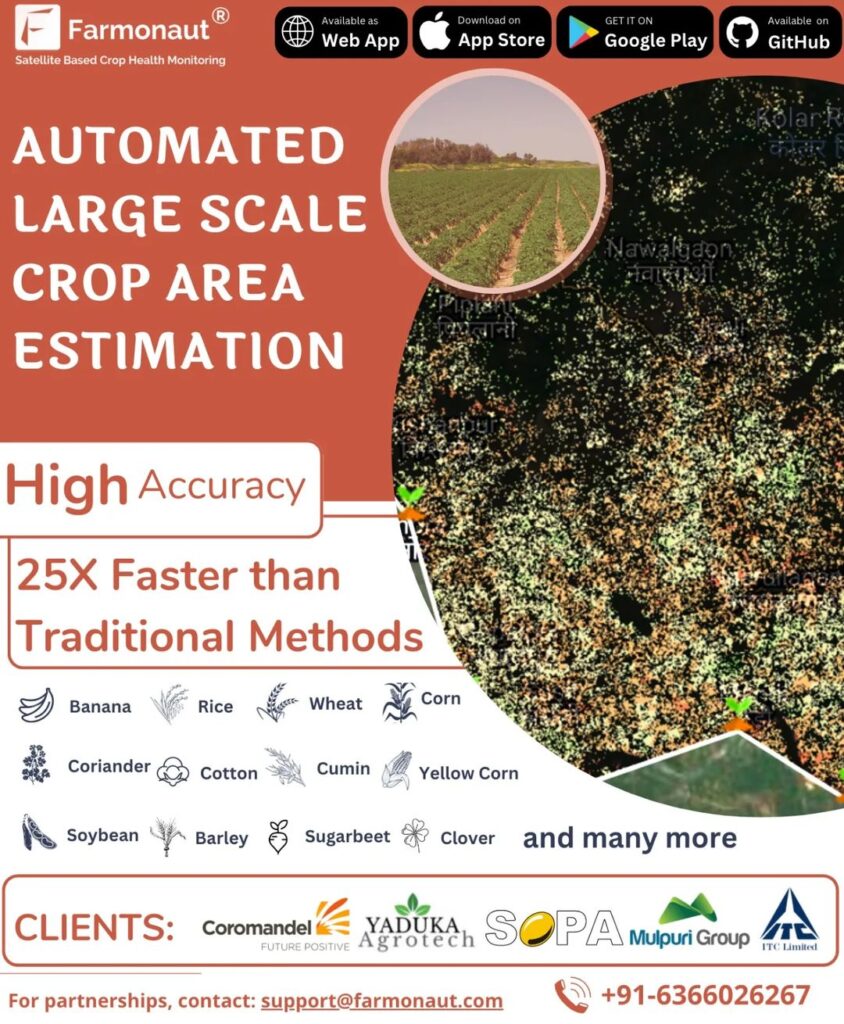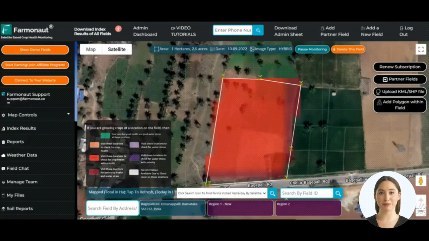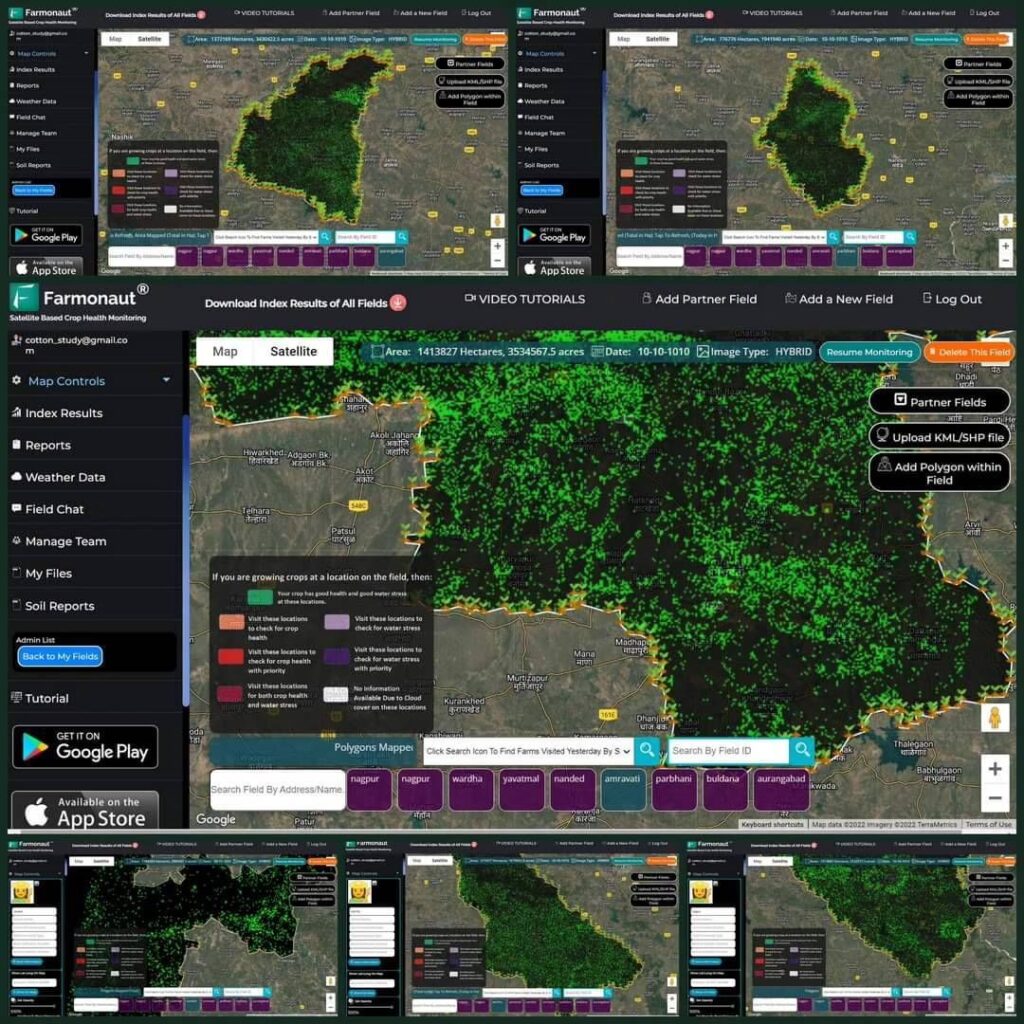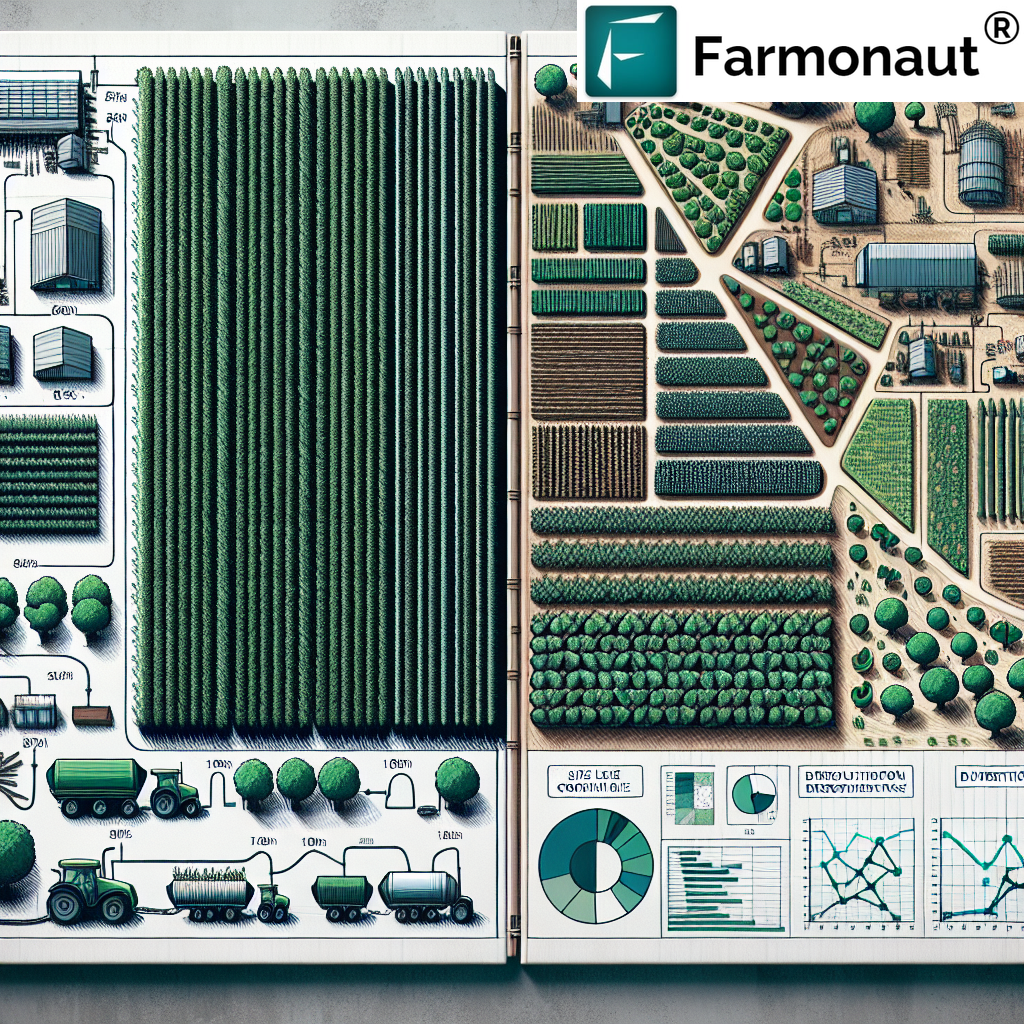Crop Cut Yield Estimation: 7 Powerful Methods for Accuracy
“Over 80% of global crop yield data relies on crop cutting experiments for accuracy and farm management insights.”
Crop yield estimation stands at the heart of agricultural success, providing robust data crucial for making effective farm management decisions. At Farmonaut, we recognize that reliable crop cutting methods and advanced yield estimation techniques are essential not only for farmers but also for researchers, governments, and agribusinesses. Through careful plot selection for yield sampling and embracing digital innovation such as satellite imagery and AI-powered analysis, we can drive unprecedented accuracy in agricultural yield data collection, empowering stakeholders to make more informed choices.
Let’s embark on a deep exploration of crop cut yield estimation: unravelling its purpose, methodology, applications, challenges, and the seven most powerful methods—guiding you to higher productivity with data-centric farming.
Purpose and Importance of Crop Cutting & Accurate Yield Estimation
Crop cutting is a foundational practice in agriculture that involves harvesting a portion of a crop from a designated area or plot to estimate the crop’s total yield. This simple act, rooted in decades of agricultural tradition, now forms the backbone for agricultural yield data accuracy, farm management decisions, and farming practices analysis.
The primary objective is to obtain accurate estimates of crop production—vital not just to individual farmers seeking improved resource allocation but also to researchers, governments, and agribusinesses aiming to inform policy formulation and plan for food security programs.
Key Goals of Crop Yield Estimation
- Farm Management: Understanding yield potential helps farmers make informed decisions regarding inputs, harvesting schedules, and pest control.
- Policy Formulation: Governments and agricultural bodies rely on reliable estimates for subsidies, support programs, and food security policies.
- Research & Analysis: Researchers utilize yield data to assess farming practices, compare varieties, and understand environmental conditions affecting crop performance.
“There are 7 advanced methods for crop yield estimation, enhancing precision in agricultural data collection and analysis.”
Standardized Methodology: Steps to Reliable Yield Estimates
Implementing a standardized crop cutting procedure is crucial for data reliability and comparison across fields, regions, and crop varieties. Below we outline the key steps—with a focus on meticulous execution at each stage:
- Selection of Plot: We choose a representative area within the field that reflects the overall condition of the crop, minimizing sampling bias.
- Plot Size Determination: The size of each plot depends on the type of crop and its growth habit (e.g., cereals vs. vegetables).
- Harvesting: We carefully harvest the crop from the selected plot, ensuring minimal damage to plants and accurate sample representation.
- Processing: The harvested material is cleaned to remove impurities such as weeds, soil, and foreign matter.
- Weighing and Recording: The clean, processed crop is weighed and results are recorded precisely per unit area.
-
Calculation: We extrapolate from the sample plot to calculate the total yield for the entire field.
Example: If a 10m x 10m plot yields 12kg, and the field is 1 hectare, yield = (12kg ÷ 0.01ha) × 1ha = 1,200kg per hectare.
By following these steps meticulously, we ensure consistent results and the highest level of accuracy in yield estimation.
7 Powerful Methods for Accurate Crop Yield Estimation
With the evolution of technology, yield estimation techniques have become more advanced, improving accuracy and reliability. Below, we detail the seven most impactful methods used for crop cut yield estimation and agricultural data analysis:
1. Crop Cutting Experiment (CCE)
- What It Involves: Traditional practice of cutting crops from randomly chosen plots within a field and extrapolating results for yield estimates.
- Key Steps:
- Plot selection for yield sampling using randomization/stratified methods to avoid bias.
- Harvesting and Processing: Carefully cut, clean, and weigh samples.
- Data Analysis: Extrapolate to obtain field-level or regional yield data.
- Best For: All field crops and government-led agricultural surveys.
CCEs are globally recognized for accurate crop yield data collection and are the cornerstone of most agricultural policy formulation.
2. Remote Sensing and Satellite Imagery
- What It Involves: Using multispectral satellite imagery and digital analytics to assess crop health and yield over large areas.
- Key Steps:
- Satellite captures NDVI, soil moisture, canopy cover, and other indices.
- Data is processed using algorithms and compared with ground samples for accuracy calibration.
- Enables real-time, scalable field monitoring.
- Best For: Large-scale fields, regional yield estimation, real-time farm management support.
At Farmonaut, satellite-based monitoring transforms traditional yield assessment by enabling precision field analysis and digital alerts.
3. Drone-Based Yield Assessment
- What It Involves: Deploying agricultural drones equipped with RGB and multispectral cameras to map crops and quantify conditions with a high level of detail.
- Key Steps:
- Flights programmed over fields to capture georeferenced images.
- AI algorithms analyze images for plant population, coverage, and stress detection.
- Generate yield maps and predictions.
- Best For: Small to medium farms focusing on precision agriculture.
4. Ground Sensor-Based Estimation
- What It Involves: Placement of IoT-enabled sensors in the field to record environmental conditions like soil moisture, temperature, and light, all of which affect yield.
- Key Steps:
- Install sensors in representative plots.
- Continuous real-time data collection on plant and soil conditions.
- Correlate sensor data with yield through analytics tools.
- Best For: Intensive, high-value crops, precision resource management.

Access Farmonaut’s smart satellite crop monitoring platform on web or mobile, enabling you to manage fields, monitor yield, analyze environmental factors, and make data-driven farm management decisions.
5. Modeling Techniques
- What It Involves: Application of mathematical or simulation models using historical data, local weather, and crop parameters to predict yields.
- Key Steps:
- Input regional weather data, soil fertility, and crop attributes.
- Run predictive models and fine-tune based on local observations.
- Best For: Scenario planning, forecasting in research, and large-scale agricultural decision-making.
6. Machine Learning and AI
- What It Involves: Utilizing machine learning algorithms fed by vast amounts of yield data to learn patterns and predict yields with improved accuracy.
- Key Steps:
- Aggregate historical satellite, drone, and field data.
- Train AI models to identify patterns linked to yield outcomes.
- Apply predictive analytics for in-season monitoring and yield forecasts.
- Best For: Continuous, large-scale digital farms or agri-research projects.
Want to integrate yield prediction into your own agri-platform?
Explore Farmonaut API for agricultural satellite and weather data
(API Developer Docs).
Farmonaut’s Jeevn AI Advisory System delivers AI-driven, personalized advice for farm management, allowing you to instantly analyze crop health and environmental risks across your fields—maximizing your yield estimation accuracy.
7. Participatory Assessments
- What It Involves: Engaging farmers directly in estimating yields through field observations, sample weighing, and collaborative decision-making.
- Key Steps:
- Training on observation and basic crop measurement techniques.
- Conducting on-site measurements guided by extension professionals.
- Group discussion and consensus to finalize field yield.
- Best For: Community-led resource allocation, extension projects, and regions with limited digital access.
This method not only gathers valuable data but also empowers farmers through direct engagement in the analysis process, reinforcing local knowledge.
Comparison of Crop Yield Estimation Methods
| Method Name | Principle/Technology Used | Accuracy Estimate (%) | Time Requirement | Cost Estimate (USD/hectare) | Scalability | Digital Integration Level |
|---|---|---|---|---|---|---|
| Crop Cutting Experiment | Manual harvest & extrapolation | 90–95% | High | 20–60 | Field/Regional | Low |
| Remote Sensing | Multispectral satellite data | 80–95% | Low | 10–30 | Regional/National | Very High |
| Drone-Based Assessment | Aerial imaging & AI analytics | 85–93% | Moderate | 30–80 | Field/Regional | High |
| Satellite Imagery | Broad-scale spatial analytics | 80–90% | Very Low | 8–25 | National/Global | Very High |
| Ground Sensors | IoT soil/plant data | 85–92% | Continuous | 65–150 | Field | High |
| Modeling | Mathematical & simulation models | 80–90% | Low | 15–40 | Research/Regional | Medium |
| Machine Learning | AI predictive modeling | 87–97% | Very Low | 10–35 | All scales | Very High |


Download Farmonaut’s app to manage your crops, access precision agriculture tools, and get AI-based crop yield estimations on-the-go.
Applications and Benefits of Crop Yield Estimation
- Yield Estimation: Provides real-time snapshots of harvest potential, supporting better market planning and post-harvest storage decisions.
- Comparative Analysis: Facilitates comparisons across crop varieties, farming practices, or treatment regimes for research and commercial optimization.
- Resource Allocation: Informs strategic allocation of fertilizers, irrigation, and pesticide application based on expected yields.
- Policy and Subsidies: Empowers policymakers to design support programs, ensure food security, and distribute agricultural subsidies with confidence in the underlying data.
- Risk Reduction: Early warning and proactive adjustments in pest control and resource management.
- Research: Enables researchers to analyze the effectiveness of new crop varieties, bio-inputs, or environmental conditions.
Looking for traceability in your supply chain?
Farmonaut Blockchain-Based Product Traceability
enables food and textile companies to track products from farm to consumer, enhancing transparency and trust.
Want to monitor and reduce your farm’s carbon emissions?
Visit Farmonaut Carbon Footprinting
for real-time tracking tools designed to encourage sustainable agricultural practices globally.
Yield Estimation Challenges and Key Considerations
While yield estimation methods have evolved, we must address important challenges and nuances to maintain accuracy and reliability:
- Sampling Bias: Non-representative plot selection can skew data—random/stratified sampling is essential.
- Environmental Variability: Soil fertility differences, microclimates, and pest pressures drive localized yield variations.
- Temporal Factors: Weather swings and harvest timing can alter yields significantly if not managed carefully.
- Labor Intensity: Traditional methods require substantial manual effort—automation can help for larger scale fields.
- Cost Constraints: Advanced digital tools or manual experiments may not be feasible for all farmers; choosing the right balance is key.
Mitigating these challenges requires using a mix of approaches, embracing validated technology, and incorporating environmental and social factors into the yield estimation analysis.
Technological Advancements and Digital Innovation
The digital revolution in agriculture has introduced transformative alternatives and enhancements to traditional crop cutting:
-
Satellite-Based Crop Monitoring: Provides broad-scape, high-frequency data for analyzing crop health and yield estimation.
See how Farmonaut’s large_scale_farm_management (Agro Admin App)
helps agribusinesses manage vast plantations, track resource use, and monitor yields across multiple plots for enhanced farm management decision making.
- AI and Machine Learning: Streamlines in-season monitoring, offering dynamic, high-accuracy predictions and improved resource allocation.
- Blockchain Traceability: Ensures every stage in the agricultural supply chain is transparent, benefiting food security and consumer trust.
- IoT Sensors & Drones: Enable granular, localized crop and environmental condition assessment—bridging the gap between ground-truthing and remote sensing.
For banks and insurers: Explore crop loan & insurance solutions
for risk-free, satellite-based field verification and policy/claim processing.
Want to optimize your workflows?
Farmonaut fleet and resource management tools
help large farms and agribusinesses track agricultural machinery and optimize operational costs with real-time dashboard analytics.
Farmonaut: Transforming Yield Estimation with Satellite & AI
Farmonaut disrupts conventional yield estimation with a robust suite of digital solutions: from satellite crop health monitoring and AI-powered advisories, to blockchain traceability and carbon management tools. Our mission is to make precision agriculture affordable and accessible for all, ensuring data-driven farm management decisions and optimal resource allocation.
- Satellite imagery for real-time field and plot analysis
- NDVI, soil moisture, and environmental conditions assessment
- Jeevn AI customized farm advisory for yield prediction and pest/disease alerts
- Flexible subscription packages for individual farmers, agribusinesses & institutions
Frequently Asked Questions (FAQs)
1. What is crop cutting?
Crop cutting is a scientific practice involving the harvest of a portion of a crop from a defined plot or area within a larger field to estimate the total yield. It is essential for accurate agricultural yield data and supports effective farm management, analysis, and agricultural research.
2. Why is accurate crop yield estimation necessary?
Accurate yield estimates help farmers make informed decisions about resource use, improve harvesting schedules, and enhance pest control. Additionally, governments, researchers, and agricultural bodies use this data for policy formulation, food security analysis, and research on farming practices and varieties.
3. What are the most reliable crop yield estimation techniques?
The most reliable methods include crop cutting experiments, remote sensing, satellite imagery, drone-based assessment, ground sensors, modeling techniques, and AI/machine learning-based analysis. Each offers unique benefits concerning accuracy, scale, and investment requirements.
4. How can I ensure my yield estimation plots are representative?
Use random or stratified sampling to select plots that mirror the overall field condition. Avoid edge rows and visibly stressed or superior crop patches to minimize sampling bias.
5. How is technology changing traditional crop cutting methods?
With the integration of satellite-based crop monitoring, drones, ground sensors, machine learning, and blockchain, it is now possible to scale yield estimation across regions, decrease labor intensity, increase accuracy, and provide digital data to power next-generation farm management decisions.
6. Does Farmonaut provide crop yield estimation solutions?
Yes, Farmonaut offers advanced satellite-based farm management solutions, AI advisory for accurate yield prediction, and digital resource management tools accessible via web/app/API. It empowers all stakeholders to monitor, analyze, and optimize crop yields digitally.
Conclusion: Paving the Future of Data-Driven Farming
Crop cut yield estimation remains the gold standard for reliable agricultural yield data that powers smart farm management decisions and forms the backbone of agricultural policy formulation. As we advance, integrating traditional practices with digital innovations—such as those offered by Farmonaut—ensures every field, from the smallest family farm to the largest agribusiness, can benefit from the accuracy, reliability, and efficiency of modern yield estimation techniques.
By adopting the latest technologies, adhering to best practices, and committing to transparent data collection, we collectively empower the agricultural community to face challenges of tomorrow—securing food, improving profits, reducing risks, and making every hectare count.


